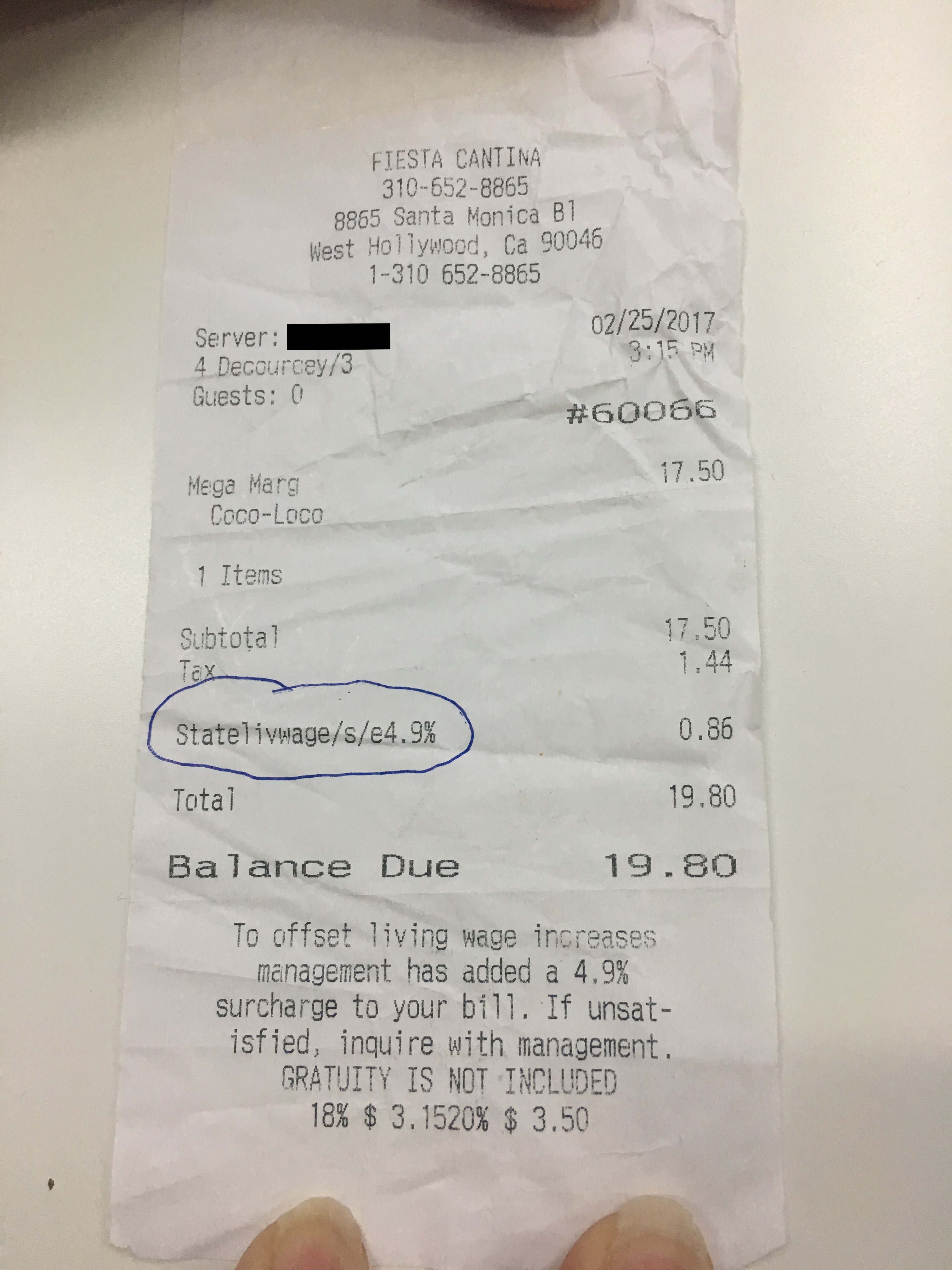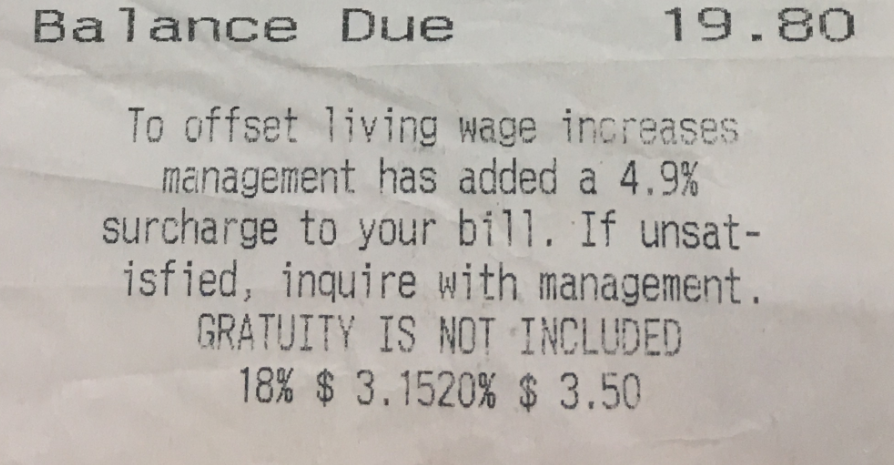This New Fee on a Restaurant Receipt Exposes a Bigger Issue

By:
There's an additional fee line on some restaurant receipts that patrons may soon notice and it's in direct response to state laws meant to help workers.
Mexican restaurant Fiesta Cantina in the West Hollywood neighborhood of Los Angeles, California, has an additional line on its receipt after taxes with the abbreviation "Statelivewage."

At the bottom of the receipt, the restaurant has an explanation that says the fee is meant to "offset living wage" increases.
 Danielle DeCourcey
Danielle DeCourcey
When an ATTN: reporter asked a server at the restaurant about the charge on Feb. 25, he said the restaurant created the line instead of absorbing California's gradual minimum wage increase into the menu prices. ATTN: reached out to management at Fiesta Cantina on March 3, but hadn't received a response by the time of publication.
ATTN: previously reported on a Mexican restaurant in Colorado that added a line called the "A70 Service Fee" in reference to the state's minimum wage increase.
California passed a gradual minimum wage increase in 2016 and the first increase from $10 per hour to $10.50 per hour for workers started on Jan. 1, with it reaching $15 per hour by the year 2022. For businesses with less than 25 employees, the federal minimum wage will go from $10 per hour in 2017 to $15 in 2023. California doesn't allow employers to count tips toward servers' minimum hourly wage, so they must be paid at least the minimum hourly wage for the state in addition to tips.
Critics of the minimum wage increase, including industries that employ low-wage hourly workers, say that the increase will hurt their business and cost jobs. However, supporters of a $15 minimum wage say it's essential for low-income people to afford the cost of living. In 2016, a person working full-time had to earn $28.59 per hour in California to afford the average fair market rent for a two-bedroom apartment. Even with the increase this year, minimum wage employee's working full-time hours would only make $21,840 annually before taxes, excluding tips.
 Dennis Van Tine/AP - apimages.com
Dennis Van Tine/AP - apimages.com
Sen. Bernie Sanders (D-Vt.) made the minimum wage a focal point of his 2016 presidential campaign, calling for $15 per hour wages which would help low-income families have a "living wage." After President Donald Trump won the election he continued to advocate for a higher federal minimum wage, which currently sits at $7.25 per hour, and hasn't increased since 2009.
"I happen to believe that the federal minimum wage … is a starvation wage, and that it should be raised to $15 dollars an hour, a living wage," Sanders reportedly said during a speech in Washington, D.C., in November 2016. "Mr. Trump did not say that, but what he did say is we should raise the minimum wage to 10 bucks an hour. Not enough, but a start, and we will hold him to those words."
RELATED: A Restaurant's New Fee Has People Talking About the Minimum Wage
